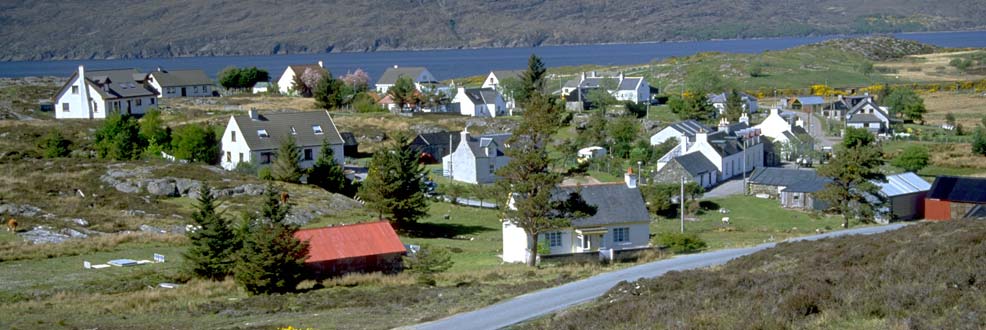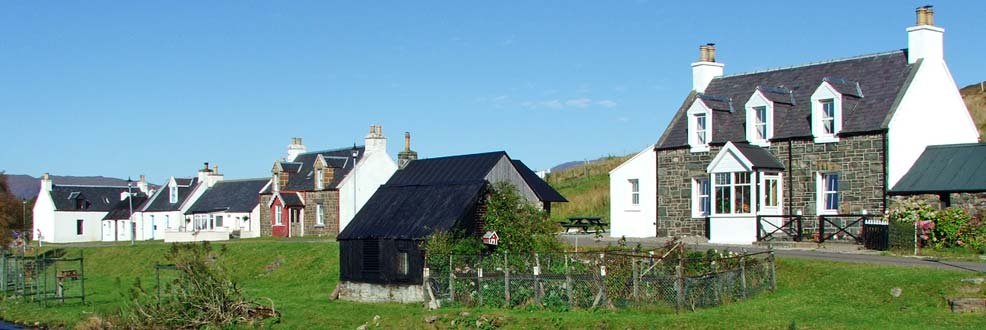Horticulture
The crofting areas represent challenging conditions for horticulture, however crofters have always grown a variety of vegetable and even fruit crops and protected cropping techniques have now opened the way for significant horticultural production. Indeed, it could be argued that horticulture could provide the way forward in making the best use of the land as protected cropping can lead to the production of relatively high value produce from relatively small areas of land.
Probably the most comprehensive publication in this area is ‘Horticulture: a Handbook for Crofters’ which is published by, and for sale from, the Scottish Crofting Association. It ‘is a 175-page guide for growers in the challenging conditions of the crofting areas written by experienced crofters and horticultural experts with specialist knowledge of crofting conditions. Principal authors are Dr. Audrey Litterick, a horticultural consultant well-known to Highland and Island growers; Calina MacDonald, presenter of Anns a’Gharradh on BBC Alba; and John Bannister, crofter and market gardener in Skye. The book is a comprehensive and definitive guide to horticultural production in Scotland’s islands and on the western and northern seaboard’ (from SCF).
Sustainable Uist, a community group benefitting from funding from the Climate Challenge Fund, carried out a series of crop trials on the nutrient deficient soils of the machair on Benbecula. The Liniclate Crop Trials (section D) involved looking at a variety of husbandry techniques, including application of different forms of fertiliser and different types of wind protection. They also looked at a wide range of crop species and varieties in an effort to find the most suitable and successful crops for these conditions.
The Extended Season Cropping Trials (section E) involved the designing and building of a large timber framed, ‘sustainable’ greenhouse, fitted with an LED lighting system, first designed for a Mars space mission, powered by a small marine wind turbine. These trials determined that ‘it is possible to grow winter salad crops successfully in a locally designed and built greenhouse and that additional lighting can produce extra outputs’.
Peatland Vegetable Growing Trials (section F) were also carried out on blackland soils on the Island of Grimsay, which is part of North Uist. The organic soil type is in stark contrast to the nutrient deficient ‘soil’ of the Machair with different challenges for the grower, but once again it was found that there is potential for horticulture with the right crops and the right techniques.
The Appendices section of the Sustainable Uist report contains the detailed crop results from all the 2010-2011 trials.
As a result of the two years’ worth of growing trials on the machair, Sustainable Uist produced a handbook entitled ‘Vegetable and salad growing in Uist Machair Soils’. It describes the challenges of growing in Uist which are related to the climate (particularly the high winds), the very poor soils and extreme seasonality, namely short winter and long summer days. The introduction deals with Nutrition, Protection, Water and Seasonality before going into detail with the following groups of crops: Summer Brassicas, Roots, Onions, Winter Brassicas, Spinach and Beets, Courgettes and other Squash, Summer Salads and finally Beans and Peas.
Further work has been carried out on Grimsay by the Blackland Centre ‘investigates the character, history, and potential of the blacklands that are common in the west of Scotland. Such land once supported generations of crofting families through a mosaic of productive, diverse uses – here some potatoes, there a bog, here a half-acre of corn, there a hayfield. In the late 20th century, the land was left to rough grazing by sheep and much traditional knowledge was lost. Blackland is found on the east side of the Uists, and is an historic ecosystem wholly distinct from the machair on the west’.
Basic gardening techniques including seed propagation, vegetative propagation and aftercare (sorted by species) from BBC.
Advice for growing your own fruit and vegetables from the Royal Horticultural Society.
Commercial Horticulture Production – a useful PowerPoint showing a variety of propagation techniques and planting techniques of both large and small scales, from the College of Agriculture Food and Rural Enterprise.
‘Identifying and Eliminating Fungal Diseases in Your Vegetables’ and 'Garden Pests: Safe and Effective Solutions', from Vegetable Expert. These pages give useful advice on the detection and prevention of plant pests and diseases.
‘Pests and diseases’ – an A-Z from BBC Gardening.
Nutrient information from Solufeed, a fertiliser manufacturer. This site gives a useful background to plant nutrition, an explanation of macro- and micro-nutrients and detail about some of these nutrients.











